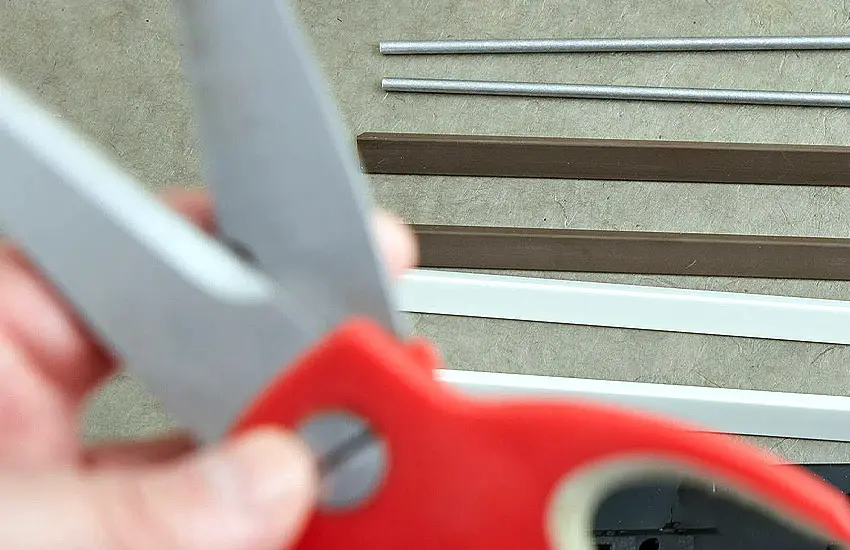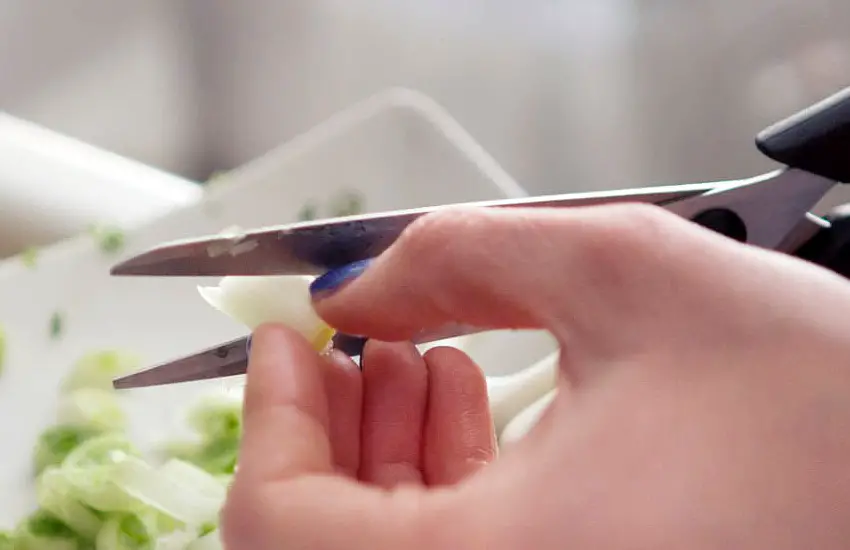As an Amazon Associate, I earn from qualifying purchases at no extra cost to you.
How to Sharpen Scissors With Knife Sharpener Rod: Expert Tips
Sharpening scissors with a knife sharpener rod might seem like a daunting task, but with the right technique and tools, it can be done effectively. Whether you’re a professional tailor, a DIY enthusiast, or just someone who wants to keep their scissors in top condition, learning how to sharpen them properly is essential.
In this comprehensive guide, we’ll walk you through the step-by-step process of sharpening scissors using a knife sharpener rod. By following these instructions, you can breathe new life into your dull scissors and make them as sharp as they were when you first bought them.

Understanding Sharpening Scissors and Knife Sharpener Rods
Before diving into the sharpening process, let’s understand why it’s essential to keep your scissors sharp. Sharp scissors not only make cutting tasks easier but also produce cleaner and more precise cuts.
Dull scissors, on the other hand, can tear fabric, paper, or other materials, leading to jagged edges and uneven lines. Regularly sharpening your scissors not only prolongs their lifespan but also ensures that they perform optimally for various tasks.
Knife sharpener rods, also known as honing rods or sharpening steels, are cylindrical rods typically made of steel or ceramic. They are commonly used to maintain the sharpness of kitchen knives, but they can also be utilized to sharpen other cutting tools, including scissors. The rod’s surface is usually textured to provide the necessary abrasiveness to sharpen the blade of the scissors effectively.
Preparing Your Workstation
Before you begin sharpening your scissors, it’s essential to gather all the necessary tools and prepare your workstation. Here’s what you’ll need:
Tools and Materials:
- Knife Sharpener Rod: Choose a rod suitable for sharpening scissors. Ceramic rods are preferred for their hardness and durability.
- Scissors: The ones you intend to sharpen. Ensure they are clean and free from any debris.
- Clean Cloth: Wipe the scissors and the rod during the sharpening process.
- Safety Gloves: Optional but recommended to protect your hands, especially if you’re new to sharpening.
Setting Up Your Workspace:
- Well-Lit Area: Ensure your workspace is well-lit to see any imperfections or changes in the scissor’s blade.
- Flat Surface: Work on a stable and flat surface to prevent any accidents or injuries.
- Secure Grip: Have a stable grip on both the scissors and the sharpening rod to maintain control throughout the process.
With your tools and workspace ready, let’s proceed to sharpen your scissors.
How to Sharpen Scissors With Knife Sharpener Rod: Step-by-Step Guide
Follow these steps carefully to sharpen your scissors effectively using a knife sharpener rod:

Step 1: Assess the Scissors
Before you start sharpening, examine the scissors for any damages or irregularities. Check for nicks, chips, or bends in the blades. If there are any significant damages, it’s best to have the scissors repaired by a professional.
Step 2: Clean the Scissors
Use a clean cloth to wipe the blades of the scissors thoroughly. Remove any dirt, dust, or debris that may have accumulated on the blades. Cleaning the scissors ensures a smooth sharpening process and prevents any contaminants from interfering with the sharpening action.
Step 3: Determine the Blade Angle
Hold the scissors in one hand and the sharpening rod in the other. Determine the angle at which the blades are sharpened. Most scissors have a beveled edge, so you’ll need to match that angle when sharpening. Generally, it’s around 20 to 30 degrees.
Step 4: Sharpening Motion
Hold the sharpening rod firmly in your non-dominant hand. Place the blade of the scissors against the rod at the determined angle. Apply light pressure and slide the scissors across the rod in a smooth, sweeping motion. Start from the base of the blade and move towards the tip. Repeat this motion several times, alternating between the two blades, to ensure even sharpening.
Step 5: Test the Sharpness
After a few passes on each blade, test the sharpness of the scissors by cutting through a piece of paper or fabric. If the scissors still feel dull or snag on the material, continue sharpening until you achieve the desired sharpness.
Step 6: Hone the Blades
Once you’re satisfied with the sharpness, hone the blades by making a few light passes on the sharpening rod. This helps remove any burrs or rough edges that may have formed during sharpening, resulting in a smoother cutting action.
Step 7: Clean the Scissors Again
After sharpening and honing, wipe the blades of the scissors clean with a cloth to remove any metal filings or debris. This ensures that your scissors are ready for use and prevents any contaminants from transferring to your materials.
Step 8: Maintenance and Storage
To maintain the sharpness of your scissors, avoid cutting hard materials such as metal or cardboard, as they can quickly dull the blades. Store your scissors in a dry, secure location to prevent them from getting damaged or dulled.
Safety Precautions
Safety precautions are crucial when sharpening scissors with a knife sharpener rod. Here are some essential guidelines to ensure your safety during the process:
- Wear Safety Gloves: Protect your hands from accidental cuts or abrasions by wearing sturdy safety gloves. They provide an extra layer of defense against sharp edges and reduce the risk of injury.
- Handle with Care: Always handle sharp objects, such as scissors and sharpening rods, with care and respect. Avoid careless handling or rough movements that could lead to accidents or injuries.
- Keep Fingers Clear: Keep your fingers away from the blades of the scissors while sharpening. Accidental slips or movements could result in cuts or punctures. Use a secure grip on both the scissors and the sharpening rod to maintain control throughout the process.
- Secure Work Surface: Ensure that your workspace is stable and free from clutter. A secure work surface reduces the risk of accidents and allows you to focus on sharpening without distractions.
- Use Proper Technique: Follow the correct sharpening technique to minimize the risk of injury and achieve the best results. Pay attention to your movements and maintain a steady hand while sharpening.
- Store Sharp Objects Safely: After sharpening, store sharp objects such as scissors and sharpening rods in a safe and secure location. Keep them out of reach of children and pets to prevent accidents.
By adhering to these safety precautions, you can sharpen scissors with confidence while minimizing the risk of accidents or injuries.
Final Words
Using a knife sharpener rod to sharpen scissors is simple and effective. By following the steps outlined in this guide, you can restore the cutting power of your scissors and extend their lifespan. With proper maintenance, your scissors will continue to provide precise and efficient cutting for various tasks.
Practice the techniques and keep your scissors sharp for smooth and effortless cutting.
